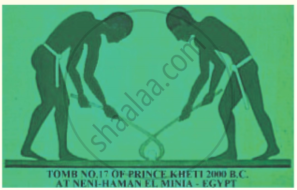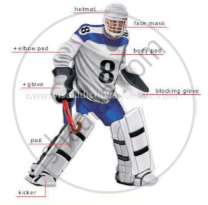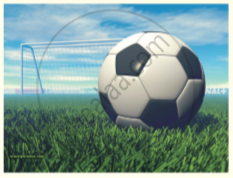Advertisements
Advertisements
प्रश्न
Discuss the following topic in groups.
The second bear did not attack the lady because he was afraid of her. Do you agree?
उत्तर
The lady while crossing found a raw bear. It seemed he was taken aback to see the self-confidence of the lady. Her fearless behavior frightened him.
APPEARS IN
संबंधित प्रश्न
There are many ways of expressing differences and similarities. Read the passage below, and study the expressions printed in italics.
Day School and Boarding School
Both day school and boarding school are institutions where children go to study.
While the former does not provide any residential accommodation, the latter expects children to live on campus. A boarding school has an advantage over a day school as their classes are normally smaller. However, the two schools are similar in aiming for high standards of education for all students.
Did you notice the phrases used by debaters to emphasise/negate certain points? Given below are certain expressions that might be used by debaters.
1. I'd like to raise a/the question/ argue ___
2. In my opinion ___
3. Nothing could be more illogical than ____
4. I feel very strongly that ___
5. I would like to draw attention to ___
6. I fail to understand ____
7. I thinkyou are being unreasonable in suggesting ___
8. I submit that ____
9. My first/ next/ final argument against/ in favour of ____
10. I support the motion that_____
11. My knowledgeable opponent has submitted that ____
12. May l ask ___
13. I strongly oppose/ support the view that ___
14. On the contrary ___
15. It is unrealistic to say that ____
16. I disagree ____
17. I firmly reject ____
18. I wholeheartedly oppose/ support____
Read and enjoy :
Hockey 
Do you know when hockey was first played? Research in Ethiopia has discovered that it has been around for more than four millenia. A tablet in Greece has images of young people playing field hockey. Even in South America, Ireland, Egypt, Scotland and Rome, there are proofs and records of this game. The game in these countries was no different than the other even though it was known by different names. Hundreds of years ago, this game was known as 'Hockie' in Ireland and it is this name that has stuck with the game ever since.

While current field hockey appeared in the mid-18th century in England, primarily in schools, it was not until the first half of the 19th century that it became firmly established. Prior to 1980, women were not permitted to take part in this game. The first club was created in 1849 at Blackheath in south-east London. During the 1600s and 1700s, hockey in England was a little dissimilar and it was more disorganised. People from all over the village would take part in the game. It was not unusual for a team to have 60 - 100 players. It was the goal of the team players to get the ball into the common ground of the rival team. This game required quite a few days to finish. Many players suffered injuries. Even though umpires were present, they were not allowed to say anything without the team members' request.
Ultimaty , good judgment prevailed. Firm regulations were introduced. In England, a headmaster restricted the number of players to thirty for one single team, During the 1860s, England's Eton College laid down some rules for the game. Additional rules were introduced afterthe formation of the Hockey Association in the year 1875.
Football
Football refers to a number of similar team sports, all of which involve (to varying degrees) kicking a ball with the foot in an attempt to score a goal. People from around the world have played games which involved kicking and / or canying a ball, since ancient times. However, most of the modern codes of football have their origins in England.

The most popular of these sports worldwide is association football, more comm.only known as just 'Football' or 'Soccer'. It is widely considered to be the most popular sport in the world
Form pairs - one student will read the text for 'Hockey', and the second student will read the text for 'Football'.
Hockey

The game starts when the umpire blows his whistle for the opening pass-back. The passback is made at the centre of the field to start the game (also after half- time and after each goal is scored). The ball, which may be pushed or hit, must not be directed over the centre line. All players of the opposing team must stand at least 5 yard from the ball and all players of both teams, other than the player making the pass-back must be in their own half of the field.
There are two umpires to control the game and to administer the rules. These umpires are the sole judges of the game. The umpires are responsible for keeping time for the duration of the game.


In front of each goal is an area known as the penalty area. This is a rectangular area, 40.2m wide and extending 16. Sm into the field where the goalkeeper operates.
A standard adult football match consists of two periods of 45 minutes each, known as halves. Each half runs continuously, meaning that the clock is not stopped when the ball is out of play. There is usually a 15-minute half-time break between halves. The end of the match is known as full-time. Anytime during the match, a team can substitute upto three players maximum.
The game is controlled by a referee who is the official timekeeper for the match, and may make an allowance for time lost through substitutions, injured players requiring attention, or other stoppages. There are also two linesmen who keep guard of the touchlines or sidelines, signalling when the ball crosses the boundary lines. The referee alone signals the end of the match.
Handling the ball deliberately, pushing or tripping an opponent, or hitting a player from behind are examples of fouls, punishable by a direct free kick or penalty kick depending on where the offence occurred. Other fouls are punishable by an indirect free kick.
The referee may punish a player's or substitute's misconduct by a caution (yellow card) or sending-off (red card). A player is given a yellow card is said to have been 'booked'.
• Red - Serious misconduct resulting in ejection from the game. If a player has been sent off, no substitute can be brought in his place.
What does he plant who plants a tree?
He plants, in sap and leaf and wood,
In love of home and loyalty
And far-cast thought of civic good____
His blessing on the neighbourhood,
Who in the hollow of his hand
Holds all the growth of all our land____
A nation's growth from sea to sea
Stirs in his heart who plants a tree.
Read the lines given above and answer the question that follow:
What motivates the man to plant a tree according to the poet?
Some are Purple and gold flecked grey
For she who has journeyed through life midway,
Whose hands have cherished , whose love has blest,
And cradled fair sons on her faithful breast,
And serves her household in fruitful pride,
And worship the gods at her husband's side.
Read the lines given above and answer the question that follow:
What’kinds of bangles have earlier been mentioned?
Abou Ben Adhem (may his tribe increase!)
Awoke one night from a deep dream of peace,
And saw, within the moonlight in his room,
Making it rich, and like a lily in bloom,
An angel writing in a book of gold:-
Read the lines given above and answer the following question.
What was the angel doing when Abou bin Adhem saw him within the moonlight in his room?
Of the seven hundred villages dotting the map of India, in which the majority of India’s five hundred million live, flourish and die, Kritam was probably the tiniest, indicated on the district survey map by a microscopic dot, the map being meant more for the revenue official out to collect tax than for the guidance of the motorist, who in any case could not hope to reach it since it sprawled far from the highway at the end of a rough track furrowed up by the iron-hooped wheels of bullock carts. But its size did not prevent its giving itself the grandiose name Kritam, which meant in Tamil coronet or crown on the brow of the subcontinent. The village consisted of fewer than thirty houses, only one of them built from brick and cement and painted a brilliant yellow and blue all over with
gorgeous carvings of gods and gargoyles on its balustrade, it was known as the Big House. The other houses, distributed in four streets, were generally of bamboo thatch, straw, mud and other unspecified material. Muni’s was the last house in the fourth street, beyond which stretched the fields. In his prosperous days Muni had owned a flock of sheep and goats and sallied forth every morning driving the flock to the highway a couple of miles away.
Read the extract given below and answer the question that follow.
Where was Muni’s house located?
The following sentence has two blanks. Fill in the blanks with appropriate forms of the word given in brackets.
The____________ said that only fresh evidence would make him change his___________. (judge)
Describe Nishad as a child.
Why did the bear climb up a tree and ate the apples?
Narrate the tale of two birds in your own words.
What is in general, the relationship between a mongoose and a snake?
A snake has no legs or feet, but it moves very fast. Can you guess how? Discuss in the group.
How did Patrick get supernatural help? Was the elf intelligent enough to answer questions in all the subjects?
Where are rattlesnakes found?
What are some of the particular habits of the mongoose and the camel?
Why does the speaker’s brother lie to him?
Complete the following sentence by providing a reason:
In Act III, Scene II of the play The Tempest, Stephano and Trinculo are angry with Caliban as they struggle out of the filthy pool because ______.
In the short story, B. Wordsworth, when the narrator’s mother refuses to buy B. Wordsworth's poem, B. Wordsworth remarks 'It is the poet's tragedy' because ______.
